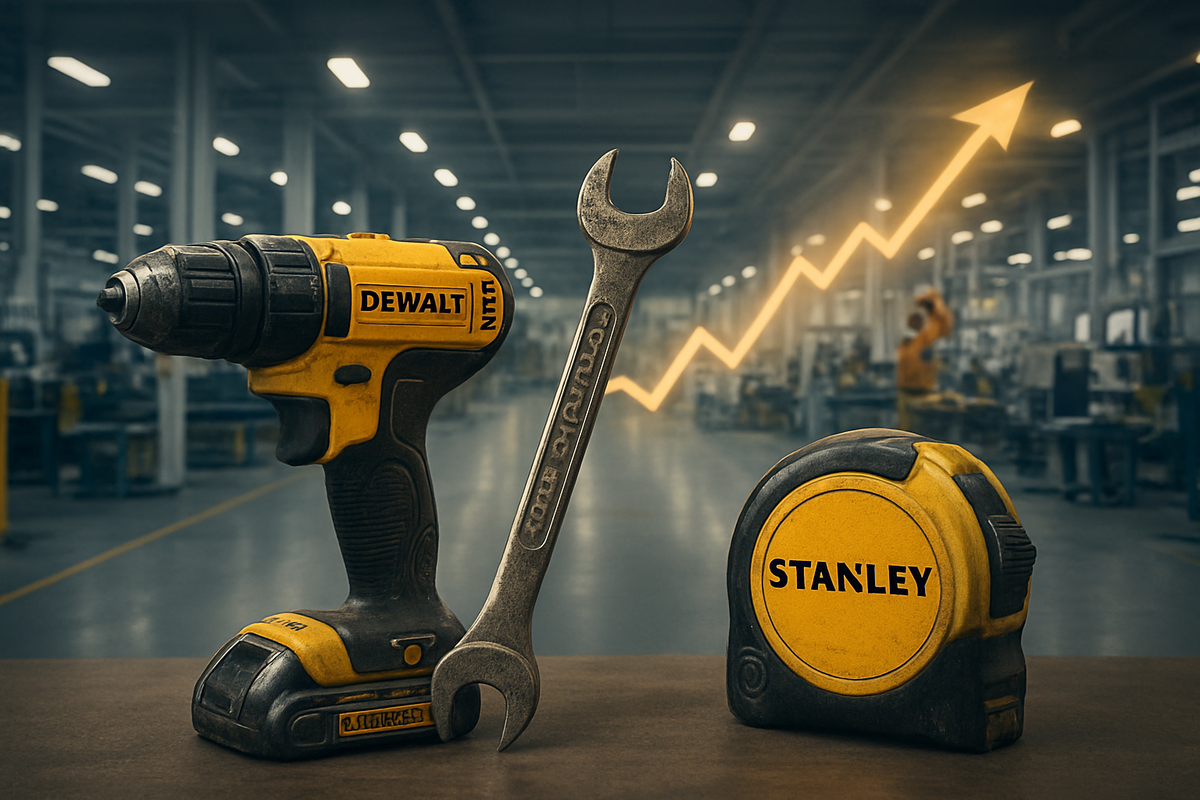
Stanley Black & Decker (NYSE: SWK), the global tools and storage giant, is set to continue its remarkable streak of shareholder returns with an anticipated $0.83 per share dividend for the fourth quarter of 2025, payable on December 16, 2025. This expected payment underscores the company's enduring commitment to its investors and reinforces its esteemed position as a "Dividend King," a title reserved for companies that have increased their dividends for over 50 consecutive years. For long-term investors, this consistent payout from a manufacturing powerhouse offers a beacon of stability amidst evolving market dynamics.
The forthcoming dividend payment, while not a new increase from the recently declared $0.83 for the third quarter of 2025, signifies a continuation of the company's strategy to return value to shareholders. The Board of Directors had approved a quarterly cash dividend of $0.83 per common share on July 24, 2025, which saw its first payment on September 16, 2025. The market widely anticipates the December 16, 2025, payment to maintain this rate, reflecting management's confidence in the company's underlying strength and future prospects despite facing a challenging economic environment.
A Legacy of Uninterrupted Returns and Strategic Resilience
Stanley Black & Decker's dividend history is virtually unparalleled in the industrial sector. The company boasts an extraordinary record of paying uninterrupted dividends for an astonishing 148 to 149 consecutive years. Even more impressively, it has increased its dividend annually for 57 to 58 consecutive years, a streak that commenced in 1968. This places Stanley Black & Decker in an elite class of companies recognized for their unwavering dedication to dividend growth. The reliability of this dividend is further highlighted by a high metric of 0.99 out of a maximum of 1.0, and a historical growth rate averaging 3.82% over the past five years and 4.63% over the past decade.
While the continuity of this dividend is a testament to the company's robust long-term strategy, its current financial health presents a nuanced picture. The payout ratio based on recent earnings has been notably high, hovering around 103.5% to 155.8%, indicating that the company is distributing more in dividends than it is currently earning. Similarly, the payout ratio based on free cash flow (FCF) stands at 120.7%. However, management is aggressively focused on generating substantial free cash flow, targeting approximately $600 million for the full year 2025, with expectations for FCF to comfortably cover the dividend in the future. Net income has shown volatility, but adjusted earnings per share (EPS) for Q2 2025 were $1.08, with a projected full-year adjusted EPS of $4.65. The company's net debt to equity ratio is also elevated at 70.2%, though interest payments are adequately covered by EBIT. To navigate macroeconomic headwinds, including high interest rates and significant tariff pressures, Stanley Black & Decker is implementing a $2 billion cost savings initiative and strategic supply chain adjustments, aiming for long-term organic growth and margin expansion.
Implications for Stanley Black & Decker and the Manufacturing Sector
For Stanley Black & Decker (NYSE: SWK) itself, maintaining this dividend is a powerful statement to the market and its shareholders. It signals confidence from leadership in their ability to execute strategic initiatives and return to healthier profitability and cash flow generation. This commitment can help sustain investor loyalty, particularly from income-focused portfolios, and potentially stabilize the stock price during periods of market volatility. The dividend acts as a tangible reward for shareholders, reinforcing the company's value proposition despite near-term financial pressures.
In the broader manufacturing sector, Stanley Black & Decker's dividend stability serves as an important benchmark. It highlights that even in capital-intensive and cyclical industries, consistent shareholder returns are achievable through strong brand portfolios, operational efficiency, and disciplined financial management. Competitors might look to such a consistent dividend payer as a model, though few can match its historical record. However, the high payout ratio also underscores the challenges even established giants face, prompting scrutiny on how efficiently capital is being deployed across the industry and whether dividends are truly sustainable without robust earnings growth. Companies like Illinois Tool Works (NYSE: ITW) or Emerson Electric (NYSE: EMR), also known for consistent dividends, might find their strategies validated by SWK's commitment, while others might be pressured to demonstrate similar shareholder-friendly policies.
Wider Significance: A Beacon for Dividend Investors
The wider significance of Stanley Black & Decker's continued dividend commitment extends beyond its immediate financial statements. In a market often swayed by short-term gains and speculative investments, the Dividend King status of SWK offers a compelling narrative for long-term investing. It exemplifies the power of compounding and consistent income generation, appealing to retirees, institutional investors, and those seeking stability in their portfolios. This event fits into broader industry trends where companies with strong brands and diversified revenue streams are better positioned to maintain shareholder returns even during economic downturns.
Potential ripple effects could see increased investor interest in other Dividend Aristocrats and Kings, as the market re-evaluates the importance of dividend stability. Regulatory or policy implications are less direct but the company's efforts to manage tariff pressures and supply chain disruptions highlight the ongoing challenges global manufacturers face, which could prompt broader discussions on trade policies. Historically, companies that maintain dividends through tough times often emerge stronger, reinforcing their brand and market position. The resilience demonstrated by SWK through various economic cycles, from recessions to periods of high inflation, provides a valuable case study for investors and corporate strategists alike.
What Comes Next: Navigating Challenges for Sustainable Growth
In the short term, all eyes will be on Stanley Black & Decker's upcoming earnings reports and management's commentary regarding the progress of its $2 billion cost savings initiative and supply chain transformation. The successful execution of these strategies is paramount to improving the company's free cash flow and lowering its payout ratio to a more sustainable level. Investors will be looking for concrete evidence that earnings are rebounding sufficiently to cover the dividend comfortably.
Long-term possibilities for Stanley Black & Decker include continued organic growth driven by innovation in its powerful brands like DEWALT, CRAFTSMAN, and STANLEY, and strategic market expansion. The company's focus on high-growth areas and operational efficiency could lead to margin expansion and enhanced profitability. Potential strategic pivots might involve further portfolio optimization or deeper integration of digital technologies in its product offerings and supply chain. Market opportunities could emerge from infrastructure spending or a resurgence in home improvement, while challenges will continue to include managing raw material costs, labor availability, and global economic volatility. Successful navigation of these factors will determine the sustainability of its dividend growth streak and its overall market performance.
Wrap-Up: A Dividend King's Enduring Appeal Amidst Scrutiny
Stanley Black & Decker's anticipated $0.83 fourth-quarter dividend, payable on December 16, 2025, is a powerful affirmation of its long-standing commitment to shareholders and its status as a Dividend King. The key takeaway is the company's extraordinary history of dividend stability and growth, making it an attractive proposition for long-term income investors. However, this commitment comes with current financial scrutiny, particularly concerning its elevated payout ratio based on recent earnings and free cash flow.
Moving forward, the market will closely assess the effectiveness of Stanley Black & Decker's aggressive cost-saving measures and strategic initiatives. The successful execution of these plans is crucial for improving profitability and cash flow, thereby ensuring the long-term sustainability and growth of its dividend. Investors should watch for improvements in key financial metrics, especially free cash flow generation and the earnings payout ratio, in coming quarters. While the company's brand strength and market leadership provide a strong foundation, its ability to translate these into consistent, covering earnings will be the ultimate determinant of its enduring appeal as a dividend growth investment.
This content is intended for informational purposes only and is not financial advice




